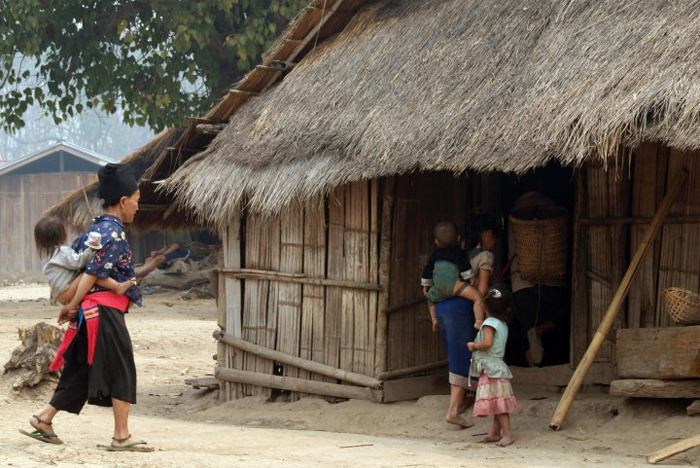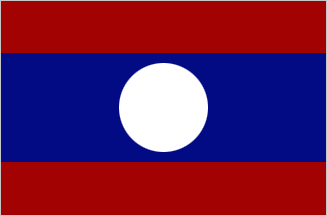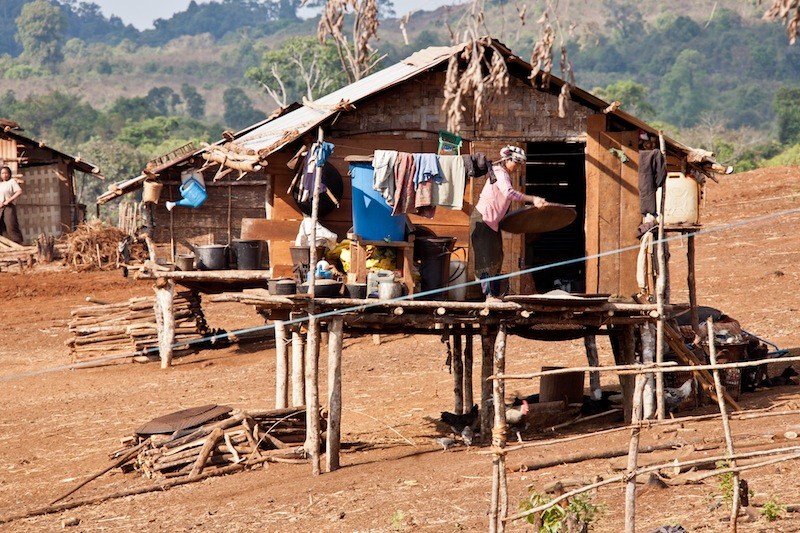
Trek to the Hmong Villages and See Pristine Tourist Attractions in Laos. Indochina Charm Travel.1/29/20
Back then, Hmong girls were told to stay home, tend, farm, and cultivate the garden. They did this purposefully to inhibit them from attending school; however, their male counterparts were encouraged to go to school and get a good education.

Trek to the Hmong Villages and See Pristine Tourist Attractions in Laos. Indochina Charm Travel.1/29/20
It was not socially acceptable for Hmong girls to go to school, therefore it was uncommon to see Hmong girls at school. This created a harmful separation between the two genders that essentially gave males more power and domination. Some husbands didn’t treat their wife well and married many other women. Because of this, females were continuously put lower than Hmong men.

Flag of Laos. Britannica. February 17, 2020.
Hmong men were the head of their families and thus had a higher public status. This created specific gender roles in Hmong families. Hmong women were to stay home and be a good wife. Hmong wives would do all the housework and chores such as cooking, cleaning, and taking care of the children as their husbands were out looking for work and made all the executive decisions. Hmong females weren’t respected as much as Hmong males and Hmong families would want to have a son more than a daughter, so the son could carry on the family name.

Poverty in Laos on the decline, says Government. Investine. February 17, 2020.